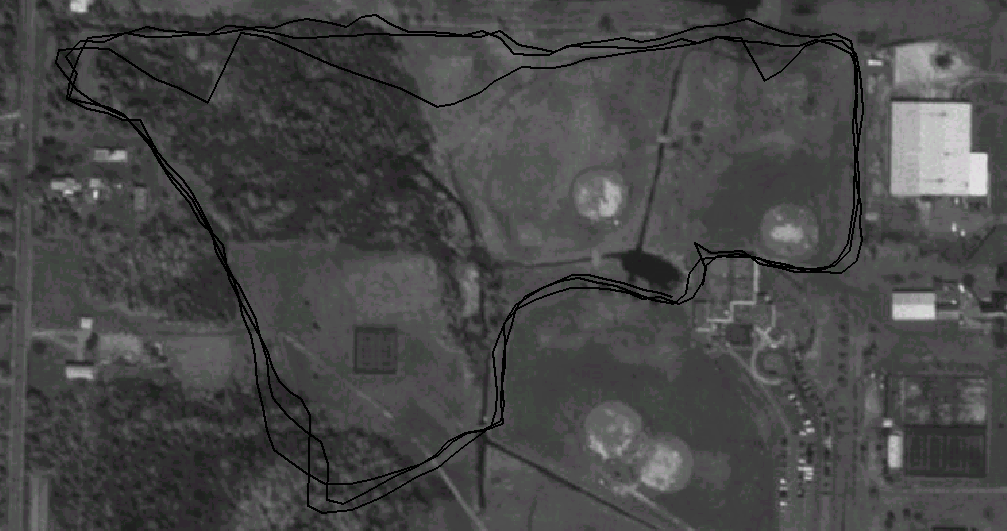
Garmin designed the Forerunner to be worn on the wrist and then included an elastic strap extender so the device can be worn on the arm (where the competitive Timex unit is worn). So, when does it make a difference and how great is the difference? While it is difficult to quantify the difference, there is a significant difference whenever the Forerunner's view of the sky is compromised by trees, buildings or hills. The images below illustrate the difference. I ran 3 laps of the 1-mile Xerox recreation trail with the Forerunner on my wrist and a second run of 3 laps with the Forerunner on my arm. The trail runs around ball diamonds and through some woods as you can see in the aerial photos.

Forerunner on wrist - notice how the three tracks are pretty tight in the open but wander excessively in the woods.
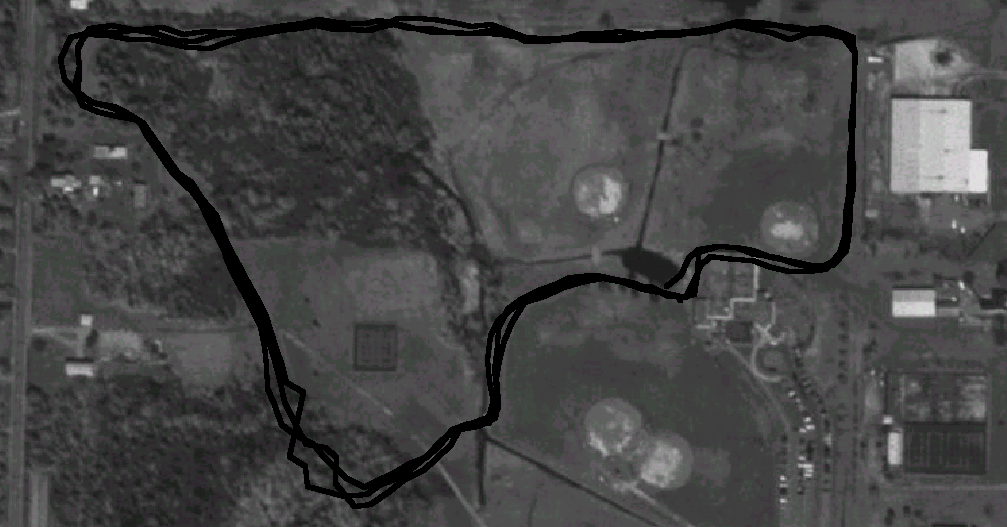
Forerunner on the arm - while the difference may not be significant under ideal conditions, the device does much better under difficult conditions when worn on the arm.
Garmin doesn't advertise the fact but you can easily upload data from your Forerunner 201 to some third party map programs. TopoFusion is an example that should interest trail runners.
TopoFusion is GPS Mapping software for Windows. It downloads maps (Topo and Aerial Photo) automatically from Microsoft's TerraServer and stores them on the hard drive. Track data from your Forerunner can be uploaded, saved and automatically merged with the topo map or aerial photo for the area. A demo version of the software can be downloaded and tried before buying. A single user license is $40. If you love maps, run trails and have a GPS, you should check out the TopoFusion web site.
Here's an example - the 10K loop used in the (Rochester, NY) Mendon Ponds Trail Races each November:
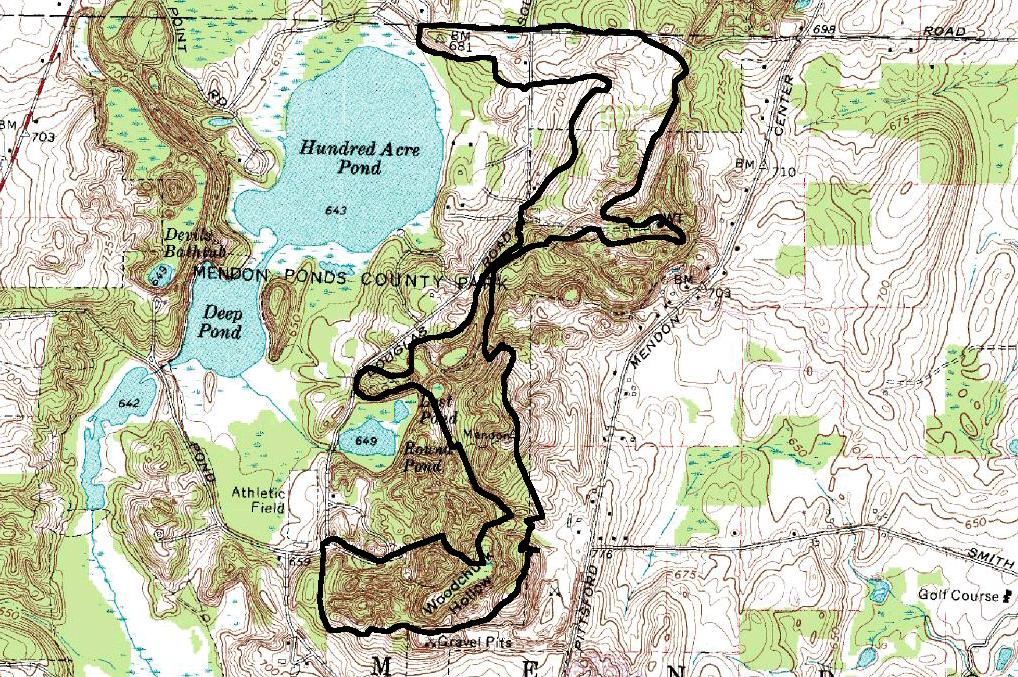
The Forerunner measured the above loop as 6.35 miles. The same loop measures consistently in the 6.25 to 6.35 range with my Timex Speed & Distance Monitor. It will be interesting to see how repeatable the Forerunner distance measurement is. I will also want to see how much difference wearing it on the arm (versus the wrist here) will make.
One advantage of the Forerunner is that you can use the track data to evaluate the accuracy of the reported pace and distance data. Track data is not available with the Timex system. Here is the track data as displayed in the Forerunner Log application:
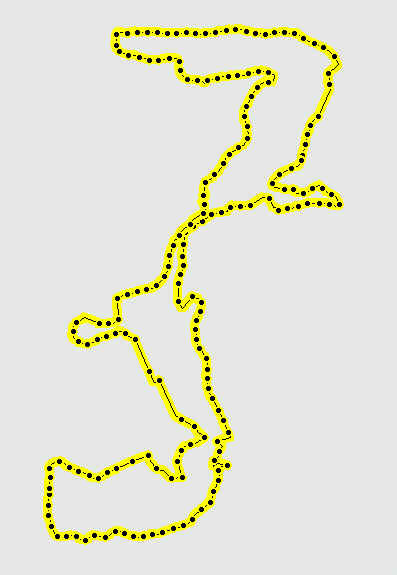
Notice how the distance between track points sometime varies greatly. Each wider than normal gap is a period during the run when the Forerunner (worn on the wrist for this run) was having difficulty receiving data from enough satellites to track my location. The Forerunner displays a Weak Signal error message when the loss of contact exceeds some threshold. During the run shown, the Forerunner only displayed two instances of weak signal. Those instances happened in the long stretch from the 4 mile point to Round Pond. Note: The Timex also has weak signal problems at the same point on the course where there are hills on both sides of the trail.
As can be seen in the TopoFusion aerial photo detail below, in more open terrain (the meadows just before the 3 mile point... you can hear the dogs barking at the Add-En-On Kennel here) the Forerunner track follows much better each curve of the trail. In the woods (leading to the race aid station at the road and away from the road, the track updates are farther apart. Both the track and distance will be less accurate even though no error message was displayed.
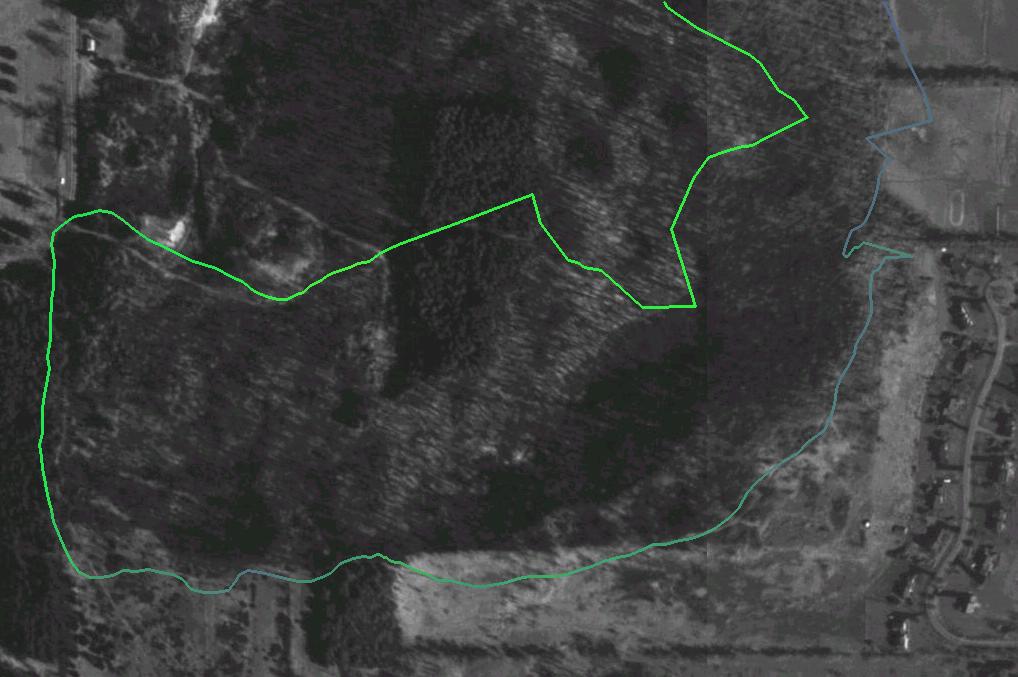
Tom Perry
April 11,2004